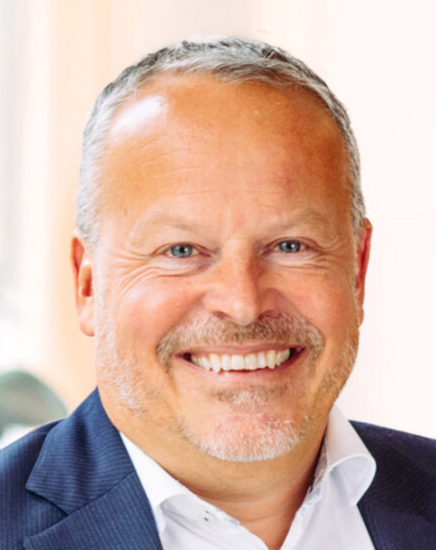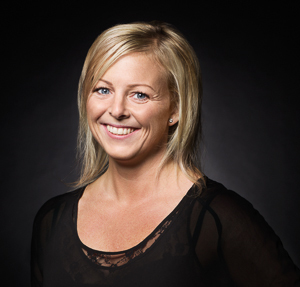Reflections on Microsoft LEAP 2019
Published February 12, 2019

Principal Consultant
Magnus Timner

Fullstack Developer
Therese Berge

<p><span style="font-size: 12pt;">In the beginning of february, the Microsoft LEAP conference took place. LEAP is the program for software architects and developers who are seeking the best possible professional training, delivered from Microsoft in their headquarters in Redmond, WA. Solidify was there, represented by myself and my colleagues Petra Liljecrantz and Therese Berge along with about 300 other attendees.</span></p>
<h2>My own reflections (Magnus)</h2>
<p><span style="font-size: 12pt;">The conference started with Scott Guthrie, executive vice president of Microsoft’s Cloud + AI Group giving a keynote about how to use intelligent cloud to solve complex business and developer problems. </span></p>
<p><span style="font-size: 12pt;">The rest of the week consisted of interesting sessions about microservices, Azure Kubernetes Service (AKS), Power BI and Diagnostics in the cloud. </span></p>
<p><span style="font-size: 12pt;">Deborah Chen talked about how to build planet-scale applications with Azure Cosmos DB across any number of Azure’s geographic regions. </span></p>
<p><span style="font-size: 12pt;">Jessica Deen had a nice demo and showed us how to go from “zero to DevOps” using Azure DevOps and Azure Pipelines.</span></p>
<p><span style="font-size: 12pt;">My absolute favorite, however, was Noelle LaCharite, talking about solving complex problems with machine learning. She showed us demos of face recognitions, speech analysis, text analysis and bot workflows.</span></p>
<p><span style="font-size: 12pt;">All in all I think the conference was very valuable and gave me good insights into where Microsoft is going with Azure, AI, containers and more.</span></p>
<h2><strong>Petra Liljecrantz’s reflections</strong></h2>
<p><span style="font-size: 12pt;">Two things that really stuck with me were the session about quantum computing and programming and the session about how Microsoft works with their Azure data centers. </span></p>
<h3>The quantum revolution</h3>
<p><span style="font-size: 12pt;">John Azariah and Julie Love talked about the quantum revolution and how it will forever alter our economic, industrial and academic landscape. It’s also not that far away actually – Microsoft hopes to have a working quantum computer in 5 years. But what’s fun is that we can start programming with the Quantum Development Kit today and gain massive advantages from that even on classic computers. </span></p>
<p><span style="font-size: 12pt;">Julie told us about an example of those advantages from real life. Microsoft did a comparison on a program that had to make predictions on new traffic routes; a state-of-the-art supercomputer made those predictions in 30 minutes, a classic computer running a performance optimized quantum program written in Q# made the same predictions in 20 milliseconds. Amazing. </span></p>
<h3>Azure DC – land, power, action</h3>
<p><span style="font-size: 12pt;">This was a great presentation by Rick Bakken on how Microsoft works with their Azure DC’s in terms of land, geography, energy, power and environment. Rick presented how they have worked in the past, the current state and what they are looking to do in the future to have the ultimate data center in terms of performance, availability and environmental friendliness. </span></p>
<p><span style="font-size: 12pt;">He showcased Project Natick, a project aimed at running data centers under water in sealed container-like objects. They had a positive trial run for a couple of months and now they are doing a longer test for 3 years in the water outside of Scotland. </span></p>
<p><span style="font-size: 12pt;">Submerging data centers is a really efficient way to operate them, and here are some of the advantages: </span></p>
<ul>
<li data-leveltext="" data-font="Symbol" data-listid="27" aria-setsize="-1" data-aria-posinset="1" data-aria-level="1"><span style="font-size: 12pt;">30 days from decision to production operations in the water as opposed to 12-18 months with a data center on land (at the minimum) </span></li>
<li data-leveltext="" data-font="Symbol" data-listid="27" aria-setsize="-1" data-aria-posinset="2" data-aria-level="1"><span style="font-size: 12pt;">Cooled with the help of sea currents which has minimal impacts on the environment and sea life </span></li>
<li data-leveltext="" data-font="Symbol" data-listid="27" aria-setsize="-1" data-aria-posinset="3" data-aria-level="1"><span style="font-size: 12pt;">In normal operations 15% of the electricity is lost in transportation through the wires, nothing is lost under water </span></li>
<li data-leveltext="" data-font="Symbol" data-listid="27" aria-setsize="-1" data-aria-posinset="3" data-aria-level="1"><span style="font-size: 12pt;">You can reach areas of the world not possible on land which results in more coverage and lower latency worldwide</span></li>
</ul>
<h2><strong>Therese Berge’s reflections</strong></h2>
<p><span style="font-size: 12pt;">The LEAP conference gave us a lot of inspiration for the future as well as an insight into what’s to come. But two of the sessions I liked the most were sessions about skills and tools I could start using immediately in my daily work. </span></p>
<h3>Full stack Monitoring for Apps & Infrastructure with Azure Monitor – Rahul Bagaria</h3>
<p><span style="font-size: 12pt;">Rahul talked about Application Insights and Log monitoring which have now been merged into one feature – Azure Monitor. He showed us how we can now get all our logs and monitoring in the same place in Azure, including alerts, metrics and telemetry. They have also improved the analytics and diagnostics in the tool. Some of the features I found interesting: </span></p>
<ul>
<li data-leveltext="" data-font="Symbol" data-listid="28" aria-setsize="-1" data-aria-posinset="1" data-aria-level="1"><span style="font-size: 12pt;">Full stack visibility for resource groups </span></li>
<li data-leveltext="" data-font="Symbol" data-listid="28" aria-setsize="-1" data-aria-posinset="2" data-aria-level="1"><span style="font-size: 12pt;">Drill down into containers and VMs </span></li>
<li data-leveltext="" data-font="Symbol" data-listid="28" aria-setsize="-1" data-aria-posinset="3" data-aria-level="1"><span style="font-size: 12pt;">Incident and event management with alerts </span></li>
<li data-leveltext="" data-font="Symbol" data-listid="28" aria-setsize="-1" data-aria-posinset="3" data-aria-level="1"><span style="font-size: 12pt;">Visualizations and dashboards </span></li>
<li data-leveltext="" data-font="Symbol" data-listid="28" aria-setsize="-1" data-aria-posinset="3" data-aria-level="1"><span style="font-size: 12pt;">Application map </span></li>
<li data-leveltext="" data-font="Symbol" data-listid="28" aria-setsize="-1" data-aria-posinset="3" data-aria-level="1"><span style="font-size: 12pt;">End-to-end transaction details </span></li>
<li data-leveltext="" data-font="Symbol" data-listid="28" aria-setsize="-1" data-aria-posinset="3" data-aria-level="1"><span style="font-size: 12pt;">Open debug snapshot </span></li>
</ul>
<h3>.NET 3.0 – Open source Scott Hunter</h3>
<p><span style="font-size: 12pt;">Another interesting session was one given by Scott Hunter where he talked about the future of .NET. One of the main new features was that they have done a lot of improvement for building web applications. You will now be able to build client side code in .NET, no more need for angular, react or vue etc. The code will run in all browsers and you will also be able to put a break point in Chrome to debug your C# code!</span></p>